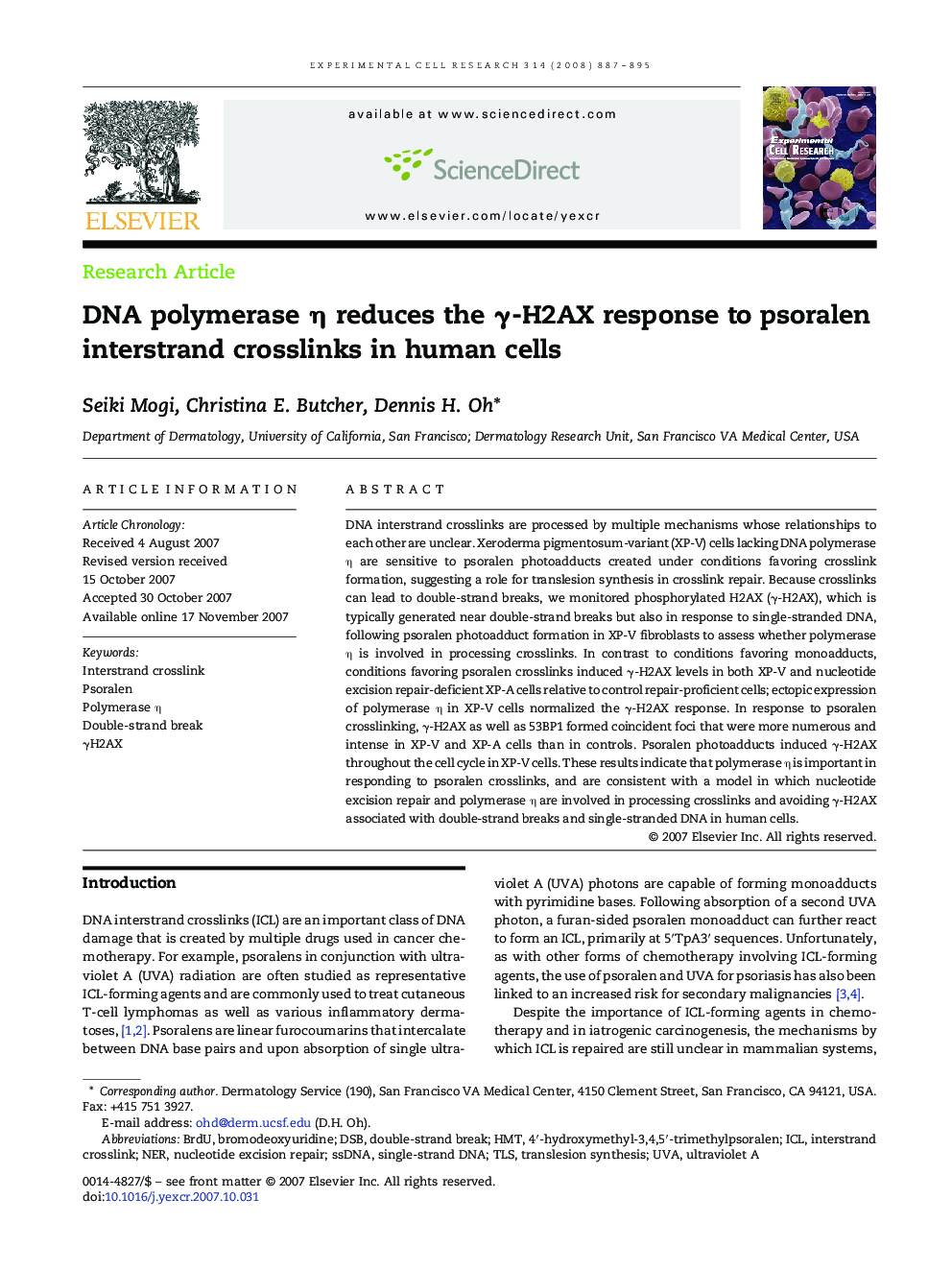| Article ID | Journal | Published Year | Pages | File Type |
|---|---|---|---|---|
| 2132340 | Experimental Cell Research | 2008 | 9 Pages |
DNA interstrand crosslinks are processed by multiple mechanisms whose relationships to each other are unclear. Xeroderma pigmentosum-variant (XP-V) cells lacking DNA polymerase η are sensitive to psoralen photoadducts created under conditions favoring crosslink formation, suggesting a role for translesion synthesis in crosslink repair. Because crosslinks can lead to double-strand breaks, we monitored phosphorylated H2AX (γ-H2AX), which is typically generated near double-strand breaks but also in response to single-stranded DNA, following psoralen photoadduct formation in XP-V fibroblasts to assess whether polymerase η is involved in processing crosslinks. In contrast to conditions favoring monoadducts, conditions favoring psoralen crosslinks induced γ-H2AX levels in both XP-V and nucleotide excision repair-deficient XP-A cells relative to control repair-proficient cells; ectopic expression of polymerase η in XP-V cells normalized the γ-H2AX response. In response to psoralen crosslinking, γ-H2AX as well as 53BP1 formed coincident foci that were more numerous and intense in XP-V and XP-A cells than in controls. Psoralen photoadducts induced γ-H2AX throughout the cell cycle in XP-V cells. These results indicate that polymerase η is important in responding to psoralen crosslinks, and are consistent with a model in which nucleotide excision repair and polymerase η are involved in processing crosslinks and avoiding γ-H2AX associated with double-strand breaks and single-stranded DNA in human cells.
